The loss of several hundred photos shot in 2013 because of a hard drive incident has forced me to go deep into the ForgottenArchives, and so I fished out this series, shot in 2004 and 2008, of a walk my friends and I used to do on the July 4th weekend over the George Washington Bridge led by the late, legendary NYC photographer and urban explorer Bernard Ente, who passed away in 2011. The target of our foray to Fort Lee will be mentioned later on this page.
FNY has never been accused of being current, but I felt it was fortuitous to feature Fort Lee now because of the town of 35,000’s involvement in the national news in January 2014, involving an act of political revenge perpetrated by members of the NJ Governor Chris Christie administration (the governor denied his personal involvement) that closed lanes to the George Washington Bridge, inconveniencing thousands and leading to at least one death.

Typically the group would meet at the 175th Street A train station at Fort Washington Avenue and from there, make its way to the pedestrian ramp on the south side of the bridge. Pedestrians can enjoy sweeping views of the Hudson River and the New Jersey Palisades looking south, but whizzing bicyclists are a constant presence, keeping pedestrians on their toes. The Port Authority of NY and NJ, which is responsible for bridge operations, prohibits photography as well, so any pictures taken from the bridge have to be taken surreptitiously and on the sly lest a ticket or even detainment be handed out by hawkeyed officials. More on the bridge below.


After exiting the bridge the group walked south along Hudson Terrace at its intersection with Bruce Reynolds Way, later Boulevard, named for a member of the Port Authority police killed during the World Trade Center attack on 9/11/01; he was dispatched to the WTC to assist in the rescue effort.
One of Bergen County’s old scrolled telephone pole mastarms can still be seen at the intersection. It had recently carries an incandescent gumball luminaire, but has since been fitted with a modern sodium lamp.

Fort Lee’s Main Street climbs a hill toward the center of town west from Hudson Terrace, and it’s about as small-town as Fort Lee gets. In recent years, Fort Lee has become a new Koreatown.
Fort Lee is named for General Charles Lee after George Washington and his troops had camped at Mount Constitution overlooking Burdett’s Landing, in defense of New York City. It was during Washington’s retreat in November 1776 (beginning along a road which is now Main Street) that Thomas Paine composed his pamphlet, The American Crisis, which began with the recognized phrase, “These are the times that try men’s souls”. These events are recalled at Monument Park and Fort Lee Historic Park. wikipedia

Walking south on Parker Avenue, Fort Lee’s most prominent features besides the Palisades and GWB as seen from Manhattan, the River Ridge and Century apartment towers, constructed in the 1980s, come into view.

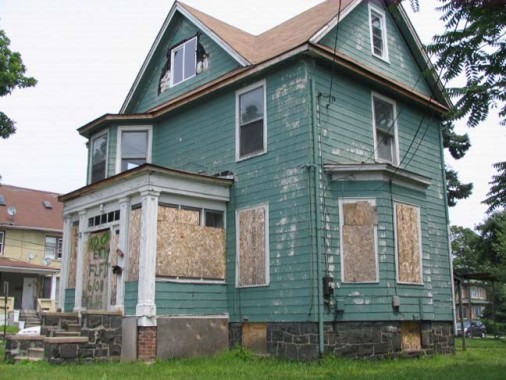
Modern buildings from the 1970s line the west side of Parker Avenue, but there are several more classic dwellings on the east side; the second one pictured has been abandoned for many years.
Though the power company serving most of New Jersey, Public Service Enterprise Group (PSE&G), has been on an extensive program to replace older streetlamps with more energy-efficient models, one-block English Street still boasts a pair of incandescent gumballs, though their days might be numbered.
Monument Park was built and dedicated in 1908 by the Daughters of the American Revolution. General John “Black Jack” Pershing was on hand for the dedication. The park was part of the original Fort Constitution of the Continental Army under the leadership of General George Washington. Over 2,600 troops were stationed in and around the Monument Park area. In 2004, the park was reconstructed in preparation for the 2008 Fort Lee Centennial Celebration. A time capsule was placed at the foot of the monument, to be opened at the Bicentennial Celebration in the year 2104. Monument Park and Continental Army Plaza in Williamsburg, Brooklyn are the only parks in the United States dedicated to the soldiers of the American Revolution. Fort Lee
The building that houses the Fort Lee Museum was constructed of bluestone from the Palisades by Judge James Moore in 1922. It sits atop land that served as an encampment for our troops, by order of General George Washington, during the Revolutionary War.
The Fort Lee Museum is housed in a wonderful Palisade bluestone building saved from the wrecker’s ball almost a quarter of a century ago by the intervention of then Councilman and future Mayor Jack Alter and then Councilman Michael Maggiano. This little stone cottage is a survivor among its newer and larger neighbors on Parker and Palisade Avenues. The building was set to be demolished and developed into a strip mall in 1989 when, thanks to the public outcry, the borough, at the behest of Councilmen Alter and Maggiano, stepped in and purchased the property. One old wooden house fronting Palisade Avenue was demolished but the borough saw something special in the stone cottage and considered it for a Parks Department office. Members of the Fort Lee Historical Society, including myself, petitioned the governing body to consider allowing the Fort Lee Historical Society to create a Fort Lee Museum in this structure, which is on the Bergen County Historic Sites listing. Councilman Alter became Mayor Alter in the early 1990s and Jack was a history buff who saw the benefit of the creation of the first museum in Fort Lee history. Fort Lee Patch

Good Shepherd Episcopal Church, Palisade Avenue north of Monument Park. The church’s age or architect don’t seem to be immediately available on the internet, so if anyone knows, fill me in.
Palisade Avenue is lined on each side with forgettable utilitarian architecture built in the 1970s and 1980s. However, the object of the bridge walk is in sight.

Early 20th Century apartment buildings like this one on Palisade across from Good Shepherd are rare in the section of Fort Lee we walked in. It’s set apart by the quoins on the building edges and the Doric-columned entrance.
Hiram’s, a roadside hot dog joint at 1345 Palisade Ave., has been serving the borough and tourists hot dogs, burgers and brew since 1932.
Joe Barnao took over Hiram’s< in 1955. Ready to retire, he sold the business to Pete Demiris and Jeff Escudero in 2002, both employees since the early 1980s. He passed on the chance to sell the business for cash to other interested buyers because he was afraid the name Hiram's would change. Together, Pete and Jeff keep the legacy going.
Hiram’s is the old man bar of hot dog stands, with a grizzled clientele and an even more grizzled staff. Hiram’s boasts and a wood-paneled interior with leftover Christmas lights and flags everywhere. Hiram’s prepares Thumann’s hot dogs, but the secret is in the preparation. They deep fry the dogs, in what I’d rather not know, but the result is a terrific dog.
According to Off the Broiler’s Jason Perlow, Hiram’s is most famed for its chili dog, which I had yet to sample. I was also surprised to learn that Yoo Hoo is the beverage of choice, not beer or soda pop. As with anything it’s best to eat first, drink later, so that the flavor of the dog isn’t compromised.
There are things we don’t have words for in English. The Germans have a word for, say, sentimental pessimism (weltschmertz). We have quite a few words for hotdogs, frankfurters, weiners, footlongs, in English. And that, I believe, is quite telling.
For many years Hiram’s chief competitor across Harmon Avenue was Callahan’s, which more resembled a traditional fast food joint than does Hiram’s. We had to pace ourselves at Hiram’s because we always waddled wandered into a second lunch at Callahan’s. After 4 or 5 hot dogs between both joints, we needed some exercise, and a walk back across the GWB filled that bill after a lengthy rest stop at Fort Lee Historic Park (below).
Like some of the bus routes in Manhattan and the Bronx, Callahan’s had articulated hotdogs, i.e. you got two to a bun. Like Hiram’s they deep-fry their dogs to preserve the juiciness. Callahan’s, like Hiram’s, also has a full fast food menu in case you’re not in the mood for dogs. I had their onion rings which are big and crispy, the way they ought to be. Onion rings should not be doughy lest the onion flavor be drowned out. The small chain was begun by Artie Castrianni in 1950 here in Fort Lee.

You won’t find Callahan’s in Fort Lee anymore, and both its other two franchises in NJ in Hasbrouck Heights and Little Ferry have closed, as well. To modern developers, banks are the institutions of choice, not hot dog stands, and the Bank of New Jersey is found here. How much longer can Hiram’s hang around?
Perlow again remembers the food of the gods.
Before proceeding across the GWB, we paused at the overlook and surrounding park to let our stomachs settle.
The six-lane George Washington Bridge was completed on October 25, 1931, eight months ahead of schedule, at a cost of $59 million and 12 lives. First named the “Hudson River Bridge,” other names for the bridge had been considered, including the “Palisades Bridge,” “Fort Lee Bridge,” “Columbus Bridge” and “Verrazano Bridge,” before the Port Authority decided upon the “George Washington Memorial Bridge” in 1930. Later, the name was shortened to “George Washington Bridge.” Full story: NYCRoads
On a cliff-top bluff where the Continental Army positioned its batteries over the Hudson in 1776, the 33-acre grounds of Fort Lee Historic Park blend scenic beauty and history.
At the north end of the Park, two overlooks command spectacular views of the George Washington Bridge, the Hudson River, and the skyline of upper Manhattan.
In the southern portion of the Park, winding pathways lead past a reconstructed blockhouse to gun batteries and firing steps. Opposite the barbette battery, authentically recreated eighteenth-century soldiers’ and officers’ huts, with a well, woodshed, and baking oven, serve as the focal point for interpretive programs.
The Visitor Center, built in 1976, is at the heart of the Historic Park, providing information on the role of Fort Lee in the American Revolution. Two floors of displays help tell the story of the tumultuous New York campaign of the fall of 1776—culminating in the Continental Army’s “Retreat to Victory” across the Jerseys.
1/12/14

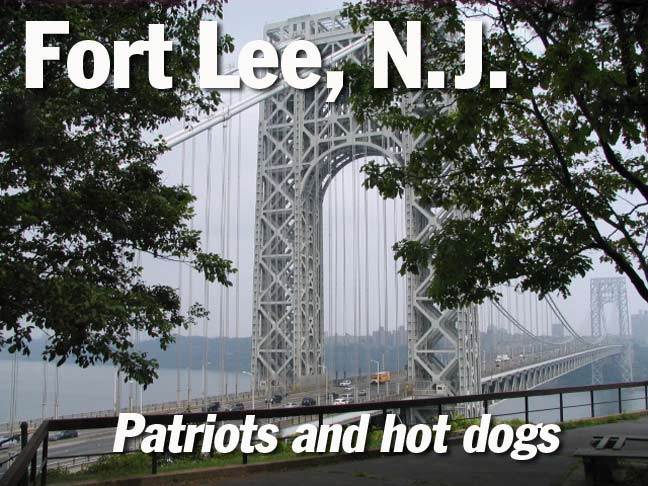
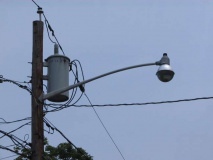
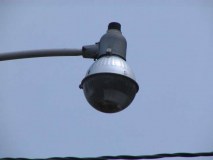
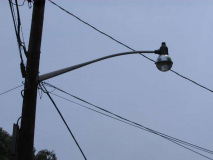
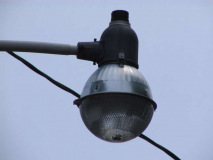
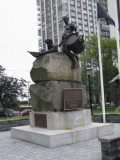

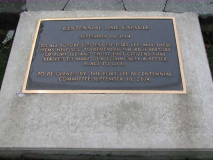
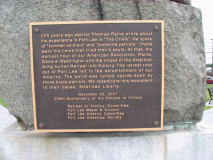

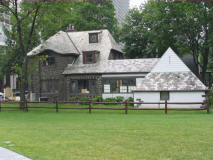
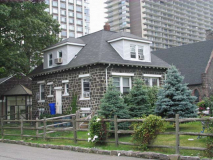
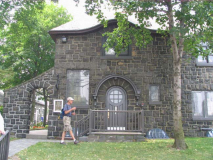
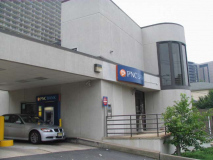
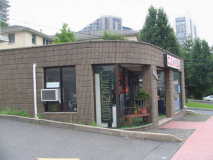
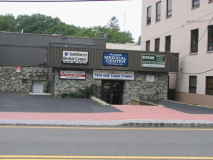
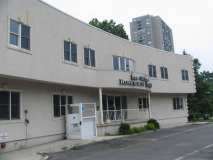
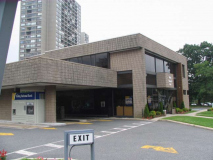
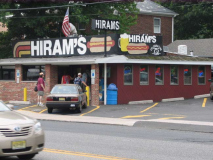
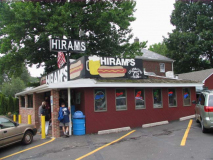
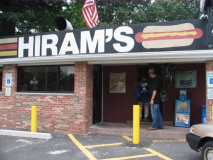
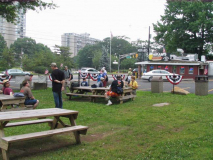
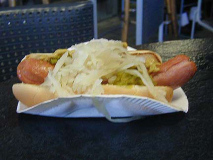
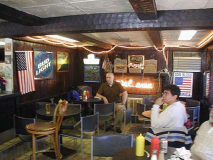
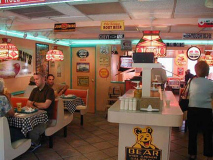
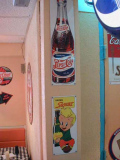
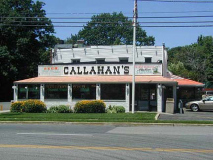
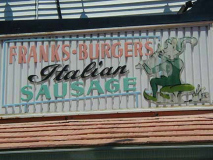
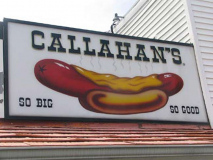
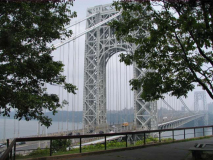
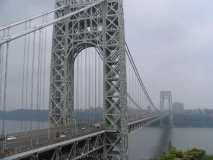
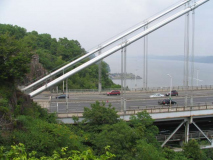
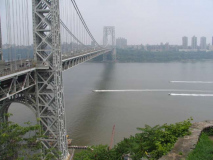
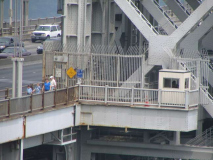
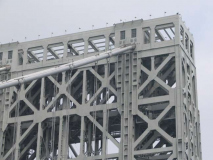
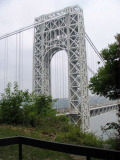
19 comments
Kevin, a minor correction. They didn’t close lanes ON the GWB. They closed access lanes leading TO the GWB from Fort Lee.
The GW bridge has eight lanes on the top deck and six on the lower deck.
http://nypost.com/2014/01/11/why-bridgegate-made-headlines-but-obamas-irs-scandal-didnt/
For those who would be led like sheep to rush to judgement, here’s some fair & balanced perspective to help you navigate through the “culture smog”.
Well done Kevin. Nice stuff from the overlook, I had worries that you might have transgressed and taken some pix on the bridge and wound up in the hoosegow. You know how pesky photographers can be.
There appears to be a slight sag in the middle of the bridge…what could that possibly be from…oh wait – I see now – it’s just Christie diverting traffic – never mind…
Very mature ! & I do not like him !
Boulevard Yeast.
So Mature ! I don’t even like him but really !
As a long time resident of Fort Lee I am very pleased with this page and addition to FNY. Cool!
I just noticed one minor thing. Artie Castrianni bought Callahans Road Stand from the Callahan sisters in 1950, they opened the place in 1934. Shawn Kelley was nice enough to mention this when I posted a link to this page on one of Fort Lee’s FB pages. There are a couple of other changes in the landscape since you took these photos. There’s an overpass in the background of the photo on Bruce Reynolds Blvd. that’s no longer there and what was a vacant lot to the left of the photographer taking that shot is now the location of the “Modern”, a brand new 47 story mixed use high rise. The Modern is the first building to rise out of a large tract south of Bruce Reynolds Blvd, north of Main Street and east of Lemoine Ave which has mostly been vacant for forty years since the failed venture backed by Investor’s Funding Corp. in the seventies which involved an attempt to bribe then mayor Ross by the Mafia.
I failed to add that “Bridgegate” involved the closing of two of the three lanes that lead from Bruce Reynolds Blvd. and Martha Washington Way to the upper deck of the Bridge. This led to complete gridlock on the streets of Fort Lee and possibly contributed to an elderly woman’s death by delaying the ambulance responding to the call involving her. The real problem was the misuse of power in a frivolous, foolish manner that completely ignored possible consequences.
Very mature ! & I do not like him !
Nice article
I haven’t lived in Fort Lee for many years so I really enjoyed this tour. My dad used to take us to Hiram’s after ball games. My friend and I used to walk across the bridge a lot before we could drive. The bridge and the palisades always carry me home to wonderful memories. Thanks for the great work!
Thanx for the wonderful memories in this article and pictures…I well remember walking down Palisades Ave, from Whiteman St. every Saturday AM on my way to Dad’s Store (DEAL TV @ 169 Main St) after my piano lessons – did this for almost seven years!!! My 3rd grade teacher lived in that apartment building across from Good Shepherd Church!!!
Chris Brosnahan
Port St Lucie, FL
I miss Callahan’s!
The good ole days when it was “Fort Lee” now it’s “Fort Ree”
Any old timers from Ft. Lee:
Do you know Ullrich Bar which closed in 1977?
Anyone who remembers Consolidated Film Lab on Main St.?
How about people: Gaby Naphegyi/Hunt, her sister Marie Branigan/Hawkins, Fred or Mickey Ullrich or his bar on Main St. which closed in 1977, my aunt, Marie C. Branigan, worked for Madonna Rectory? Lastly, my Uncle Bill Branigan or his dad, William Branigan, war hero, WW 1, or my dad, Robert E. Branigan? Would appreciate any tidbits about my family from Coytesville!! Many thanks,
C. Branigan
Nice article. Monument Park, however was Parker’s Pond until 1898, connected to a small ice pond across Parker Ave to the East, where Washington’s bakers’s had their ovens. A small stream probably ran west to intersect Dead Bridge Brook (now Lemoine Ave, and so named because some local farmers slit the throats of British troops and tossed them over the bridge), and then connected to the Whiteman mall, which at the time was Hooks Ice pond.
you forgot twin gables down the road on the other side of the street